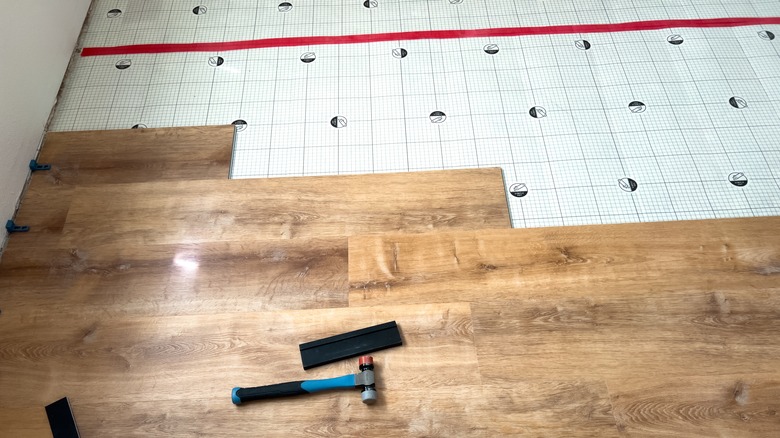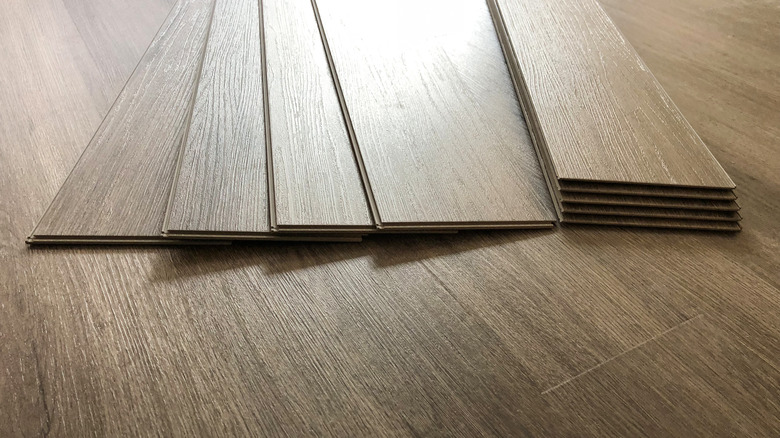The Important Step You Don't Want To Miss When Installing Vinyl Plank Floors
There are several reasons you may decide that vinyl plank flooring is right for your home. It can transform the look and feel of your rooms, offering a sleek and modern appearance. It's easy to maintain and highly durable, providing a great flooring solution for an affordable price. So, of course, it's tempting to jump straight into installation when vinyl planks seem ready to go right out of the box, but rushing the process could cause problems in the future. The one step in a flawless vinyl plank flooring installation that often gets overlooked is to allow the planks to acclimate to the room where they will be installed.
Acclimating your vinyl planks to the room is an essential component of the installation process that can cause massive issues if not done properly. Vinyl flooring is porous and dense, meaning it can absorb and release moisture depending on the humidity surrounding it. If this process is not fully completed, the planks could expand or contract after installation, running the risk of buckling, warping, or gaping in the future. Not only are these issues unsightly, but they affect the longevity and function of your floor, and you'll have to spend more money to reinstall or fix them.
Acclimation just takes time
This acclimation process involves letting the planks sit in the room for a couple of days to adjust to the temperature and humidity of the space. There are only a few steps to follow. First, place the flooring boxes in the room where they will be installed. Make sure to inspect the flooring first to check for visible damages or defects. You can either place the vinyl planks back into their boxes and let them acclimate there or spread them flat out on the floor so each plank is fully exposed to the air.
Next, set the temperature and humidity in the room to stable and normal living conditions, anywhere from 65 to 85 degrees Fahrenheit with humidity levels between 35% and 65%. If the room feels warm even with a lowered temperature, it could be one of the signs that you should run a dehumidifier.
Lastly, leave the vinyl planks in the room for at least 48 hours. Check the instructions for your product, as some may require additional time. By leaving them alone for a few days, the flooring can expand or contract as needed to adjust to the new environment, so the planks will settle perfectly once you install them. Even though this process takes a bit of time, it will save a lot of headaches down the line.

